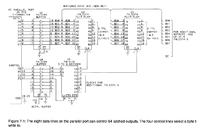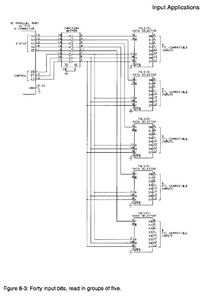orion188
Newbie level 5
{Please let me know if this should be posted in a better group}
Hi.
I've been far from digital design for years and am not familiar with existing components and design ideas.
But as part of my current project, I have to design a system in which:
- There are 40 identical components(IC sets).
- Each component has a 14-bit parallel input.
- The system has 10 different states.
- In each state a special number should be fed to the input of each component, which is a different number for each component. (In fact we have 40 look-up tables, each having 10 rows)
- The fed data should be kept until the time comes for the next state (see? I've completely forgotten how you guys say such things in the literature )
- The system remains in each state for about 500us. So things should happen fast enough.
The very first and basic idea that came to my mind for implementing this, is to use a micro controller for, say, every 4 components. And these micro's are controlled by a master micro, or something like that!
But I'd like to know if you have any better suggestions. I think a micro controller is too bloated for just feeding a bunch of bits. How about things such as CPLDs, Shift Registers (parallel?), Memories.... something that is simple, fast and just does it's simple job? fast and clean?
I should add that the price is not currently an important factor.
Thanks in advance for your help.
Hi.
I've been far from digital design for years and am not familiar with existing components and design ideas.
But as part of my current project, I have to design a system in which:
- There are 40 identical components(IC sets).
- Each component has a 14-bit parallel input.
- The system has 10 different states.
- In each state a special number should be fed to the input of each component, which is a different number for each component. (In fact we have 40 look-up tables, each having 10 rows)
- The fed data should be kept until the time comes for the next state (see? I've completely forgotten how you guys say such things in the literature )
- The system remains in each state for about 500us. So things should happen fast enough.
The very first and basic idea that came to my mind for implementing this, is to use a micro controller for, say, every 4 components. And these micro's are controlled by a master micro, or something like that!
But I'd like to know if you have any better suggestions. I think a micro controller is too bloated for just feeding a bunch of bits. How about things such as CPLDs, Shift Registers (parallel?), Memories.... something that is simple, fast and just does it's simple job? fast and clean?
I should add that the price is not currently an important factor.
Thanks in advance for your help.

